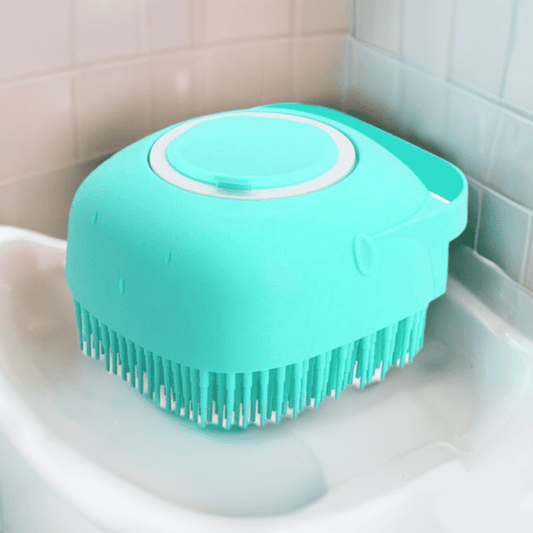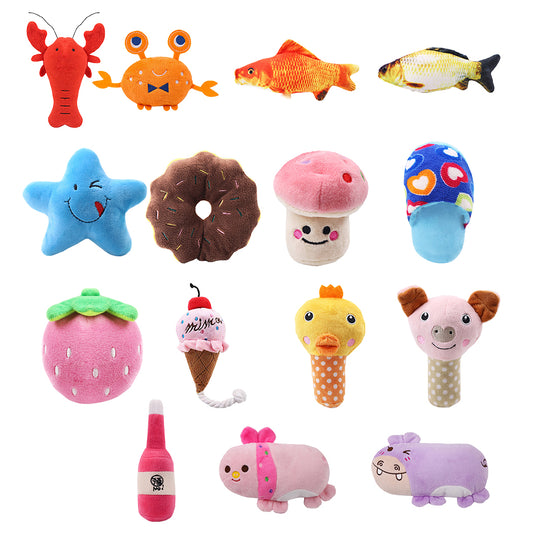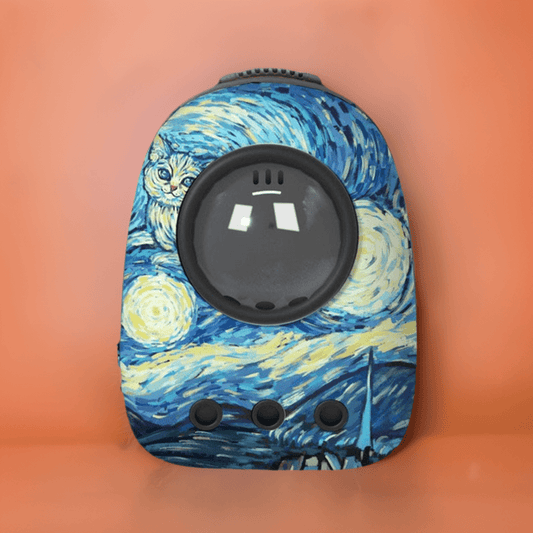Are you intrigued by the idea of owning fish as pets but worried about the complexities of fishkeeping? Don't fret! This article is your ultimate guide to the easiest fish to take care of.
We'll break it down into simple terms, answering all your questions and providing you with valuable insights.
What Makes a Fish Easy to Care for?
To begin our journey into the world of easy-to-care-for fish, let's explore the qualities that make a fish an ideal choice for beginners:
Hardiness and Adaptability
Easy-to-care-for fish are often hardy and adaptable to various water conditions. They can endure slight fluctuations in water parameters and are less susceptible to diseases, making them resilient choices for novice aquarists.
Peaceful Nature
Choosing fish with a peaceful temperament is essential for a harmonious aquarium. Peaceful fish are less likely to engage in aggressive behavior, reducing the chances of conflicts in your tank.
Size and Space
Smaller fish species are generally easier to care for, especially for those with limited tank space. It's essential to match the fish's size with your tank's capacity to ensure they have enough room to thrive.
Top 10 Easiest Fish for Beginners
Now, let's delve into a detailed list of the top 10 easiest fish for beginners, each with its unique characteristics and care requirements.
1. Betta Fish
Betta fish, also known as Siamese fighting fish, are not only beautiful but also incredibly hardy. They can thrive in small tanks and are relatively low-maintenance. Just be cautious about housing multiple males together, as they can be territorial.
Betta fish come in a stunning array of colors and fin variations, making them a popular choice for aquarium enthusiasts. They have labyrinth organs, allowing them to breathe air from the surface, which means they can tolerate lower oxygen levels in the water. This adaptation makes them resilient and suitable for beginners.
2. Guppies
Guppies are colorful, small-sized fish that are perfect for beginners. They are adaptable, easy to feed, and reproduce readily. Watching baby guppies can be an exciting experience for fish enthusiasts.
Guppies are known for their vibrant colors, and there are countless varieties to choose from. They are not picky eaters and readily accept a variety of foods, making them an excellent choice for novice aquarists.
3. Platies
Platies are peaceful and come in various colors. They are known for their ease of care and can live harmoniously with other fish. These are a great choice for a community tank.
Platies are livebearers, meaning they give birth to live fry rather than laying eggs. This makes them an excellent choice if you're interested in observing the full life cycle of your fish.
4. Goldfish
Goldfish are iconic and readily available in pet stores. They are hardy but can grow quite large, so be prepared for a spacious tank. Ensure good filtration as they produce a lot of waste.
Goldfish come in various shapes and sizes, from the classic comet goldfish to fancy varieties with unique features like bubble eyes or telescopic eyes. Their distinctive appearance makes them a favorite among fishkeepers.
5. Corydoras Catfish
Corydoras catfish are small bottom-dwelling fish that are excellent for keeping the tank clean. They are peaceful and can tolerate a range of water conditions.
Corydoras catfish are not only beneficial for maintaining a clean substrate but also fascinating to watch as they swim and interact with each other. They are social creatures that thrive in groups, so consider keeping them in a small shoal.
6. Swordtails
Swordtails are another popular choice for beginners due to their hardy nature and peaceful temperament. They are known for the distinctive "sword" extension on their tails, which adds a unique touch to your aquarium.
Swordtails are livebearers, so they give birth to live fry. This can be an exciting aspect of keeping them, as you may witness the birth of tiny fish in your tank.
7. White Cloud Mountain Minnows
White Cloud Mountain Minnows are tiny, cold-water fish that are exceptionally easy to care for. They are a great option if you don't want to invest in a heater for your aquarium.
These minnows have a beautiful silvery-white coloration and are known for their peaceful demeanor. They do well in groups and can thrive in unheated tanks, making them an ideal choice for beginners.
8. Cherry Barbs
Cherry barbs are vibrant, red-colored fish that add a splash of color to your tank. They are known for their peaceful nature and adaptability to various water conditions.
Cherry barbs are relatively undemanding when it comes to care. They are active swimmers and enjoy having plenty of swimming space. A group of cherry barbs can create a visually stunning display in your aquarium.
9. Zebra Danios
Zebra danios are small, striped fish known for their energetic behavior. They are incredibly hardy and can withstand a range of water conditions, making them suitable for beginners.
Zebra danios are active swimmers and enjoy a well-aerated tank with plenty of swimming space. They are known for their distinctive zebra-like stripes, which make them easy to identify.
10. Neon Tetras
Neon tetras are tiny, brightly colored fish that add a dazzling display to your aquarium. They are known for their peaceful nature and are excellent choices for community tanks.
Neon tetras are best kept in groups to showcase their schooling behavior. Their vibrant blue and red stripes make them a sought-after choice for beginners and experienced aquarists alike.
Setting Up Your Fish Tank
Now that you've chosen your fish, it's time to set up their new home. Follow these steps to create the perfect environment:
Choose the Right Tank
Select a tank that suits the size of your chosen fish. It's essential to provide them with adequate space to swim comfortably.
Install Proper Filtration
Invest in a good quality filter to maintain water quality. Filters remove waste and keep the water oxygenated.
Add Substrate and Decor
Choose a suitable substrate for the bottom of the tank and add decorations like plants and caves. These provide hiding spots and make the tank more visually appealing.
Set Up a Heater (if Necessary)
Some fish require a specific temperature range. If your fish need warmer water, install a heater with a thermostat to maintain the right temperature.
Provide Adequate Lighting
Ensure your tank has appropriate lighting for the plants and fish. LED lighting is energy-efficient and provides a natural-looking illumination.
Water Quality Matters
Maintaining water quality is crucial for your fish's health. Here's what you need to know:
Regular Water Changes
Change a portion of the water regularly to remove toxins and waste. For most fish, a 25% water change every two weeks is sufficient.
Test Water Parameters
Invest in a water testing kit to monitor parameters like pH, ammonia, nitrite, and nitrate. Keep them within the recommended range for your fish species.
Condition the Water
Use a water conditioner to remove chlorine and chloramines from tap water before adding it to your tank.
Monitor Nitrogen Cycle
Understanding the nitrogen cycle is essential for a healthy aquarium. Beneficial bacteria break down ammonia into less harmful substances. Regular water testing helps you ensure this cycle is functioning correctly.
Feeding Your Fish
Feeding your fish is relatively straightforward, but it's essential to provide a balanced diet:
Choose High-Quality Food
Invest in good quality fish food that suits your fish's dietary needs. Read the label and follow the feeding instructions.
Feed in Moderation
Avoid overfeeding, as this can lead to water quality issues. Feed your fish small amounts a few times a day.
Offer Variety
Provide a variety of foods, including flakes, pellets, and occasional treats like live or frozen foods. This variety ensures your fish receive a well-rounded diet.
Monitor Feeding Behavior
Observe your fish while they eat. Ensure all fish have a chance to eat, as more dominant fish may monopolize the food.
Maintaining the Right Temperature
Maintaining the correct temperature is vital for your fish's well-being:
Use a Thermometer
Install a thermometer in your tank to monitor the temperature regularly. Different fish species have varying temperature requirements.
Adjust as Needed
If the temperature fluctuates, adjust the heater settings to keep it within the ideal range for your fish. Sudden temperature changes can stress your fish.
Cleaning and Maintenance
Regular cleaning and maintenance keep your fish tank in top condition:
Clean Algae
Remove algae from the glass and decorations using an algae scraper or brush. Algae not only detracts from the tank's appearance but can also hinder the growth of live plants.
Vacuum the Substrate
Use a substrate vacuum to clean debris from the bottom of the tank during water changes. This helps maintain water quality and prevents the buildup of waste.
Check Equipment
Regularly inspect and maintain your filter, heater, and other equipment to ensure they are working correctly. A malfunctioning filter, for example, can quickly lead to water quality problems.
Prune Live Plants
If you have live plants, occasional pruning is necessary to prevent overgrowth. Trim dead or decaying plant material to maintain a healthy aquatic environment.
Common Mistakes to Avoid
To make fishkeeping even easier, here are some common mistakes to steer clear of:
Overstocking
Don't overcrowd your tank. Follow recommended stocking guidelines to avoid stress and health issues in your fish. Overstocking can lead to poor water quality and territorial disputes among fish.
Skipping Water Changes
Regular water changes are essential for maintaining water quality. Skipping them can lead to a buildup of toxins and pollutants, putting your fish at risk.
Neglecting Quarantine
Always quarantine new fish before introducing them to your main tank. Neglecting this step can introduce diseases and parasites that can harm your existing fish population.
Overfeeding
Overfeeding is a common mistake among beginners. Excess food not eaten by the fish can decompose and foul the water. Follow the recommended feeding guidelines for your specific fish species.
Creating a Beautiful Fish Environment
Lastly, let's make your fish's home visually stunning:
Add Plants
Live plants not only enhance the aesthetics but also provide oxygen and hiding places for your fish. Plants create a natural, soothing environment for your aquatic companions.
Use LED Lighting
Consider LED lighting to showcase the colors of your fish and plants. LED lights are energy-efficient and come in various spectrum options to promote plant growth and fish coloration.
Maintain Clean Glass
Keep the glass clean to ensure you have a clear view of your fish. Regularly scrape off algae and use a magnetic cleaner to maintain a crystal-clear viewing pane.
Conclusion
Congratulations! You are now well-equipped to care for the easiest fish as a beginner. Remember to choose hardy species, provide the right environment, maintain water quality, and avoid common mistakes. With the right knowledge and care, your fish will thrive and bring joy to your life.
Frequently Asked Questions
1. Can I keep different fish species together in one tank?
Yes, but it's essential to research the compatibility of the species you want to keep together. Some fish are territorial or aggressive and may not coexist peacefully. Always consider the specific needs of each fish.
2. How often should I clean my fish tank?
Regular maintenance, including water changes and cleaning, should be done every two weeks. However, you may need to clean more frequently if your tank gets dirty quickly. Monitor the condition of your tank to determine the ideal cleaning schedule.
3. What should I do if my fish gets sick?
Isolate the sick fish in a quarantine tank to prevent the spread of disease to other fish. Consult a veterinarian or a knowledgeable fish expert for advice on treatment. Early diagnosis and treatment are crucial for the well-being of your fish.
4. Can I use tap water for my fish tank?
Yes, you can use tap water, but it must be treated with a water conditioner to remove chlorine and chloramines, which can harm your fish. Always dechlorinate tap water before adding it to your aquarium.
5. How long do fish typically live?
The lifespan of fish varies greatly depending on the species. Some may live only a few years, while others can live for decades with proper care. Research the specific needs and lifespan of your chosen fish breed to ensure you provide them with the best care possible.



